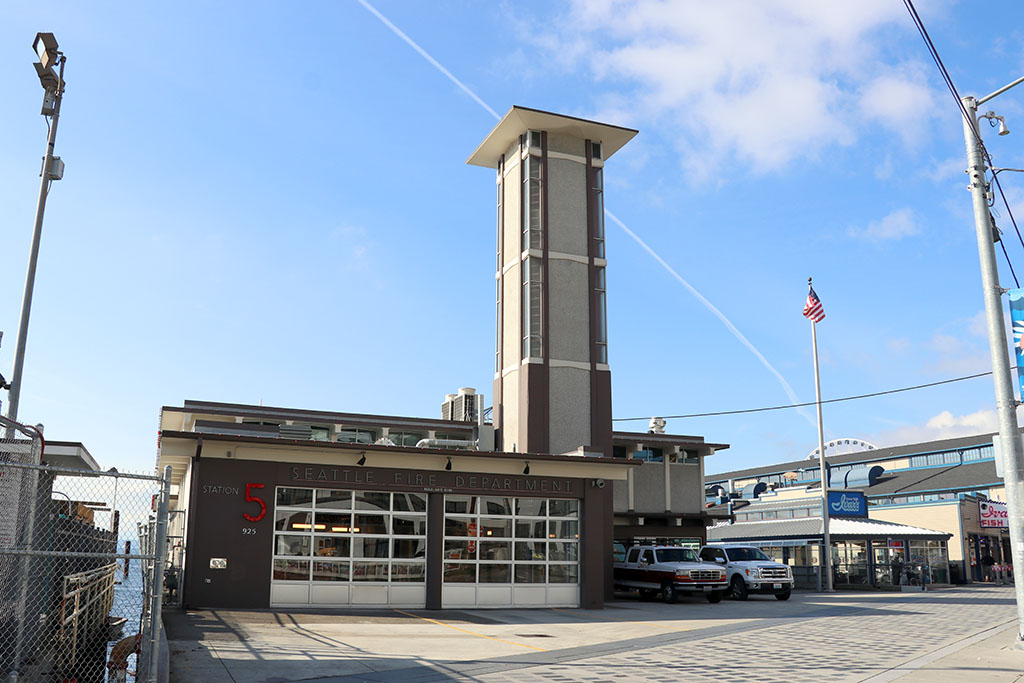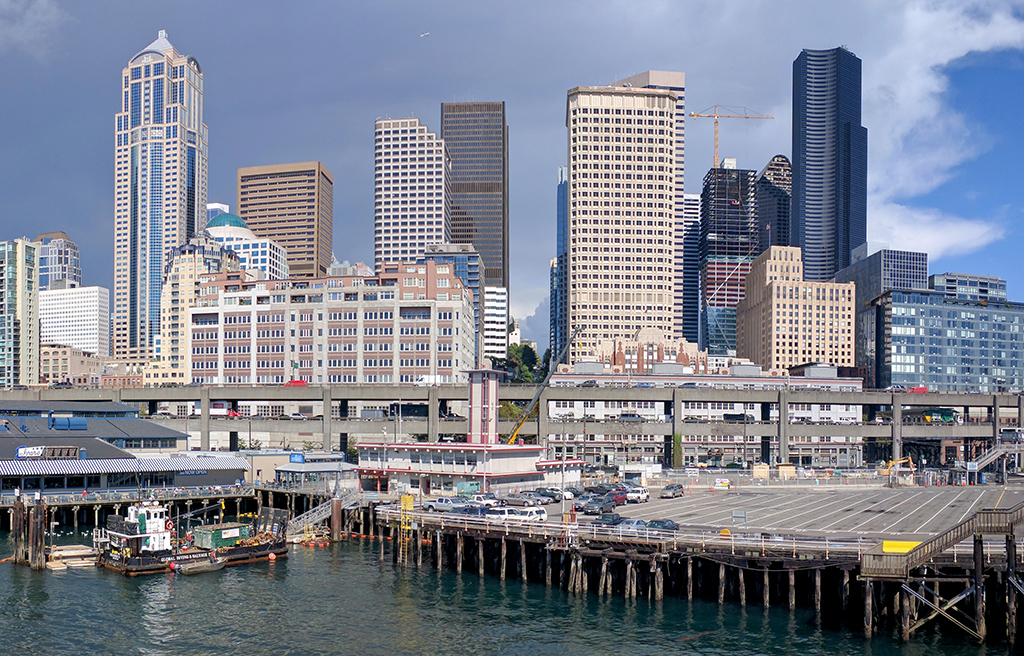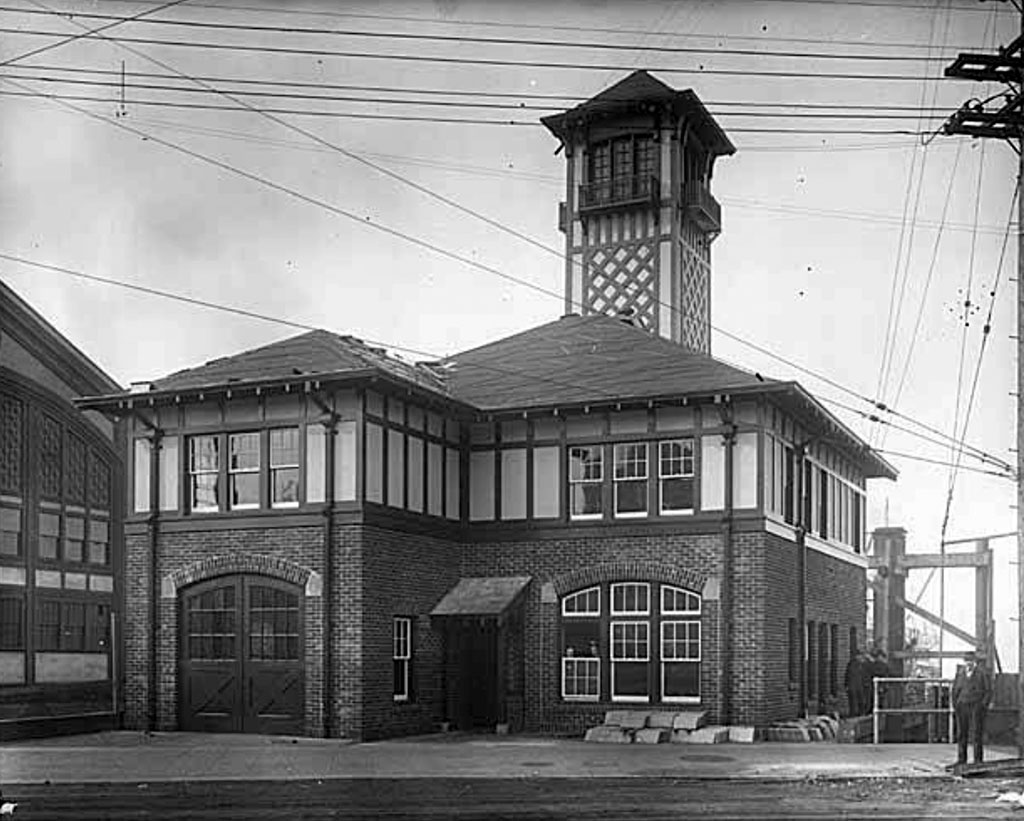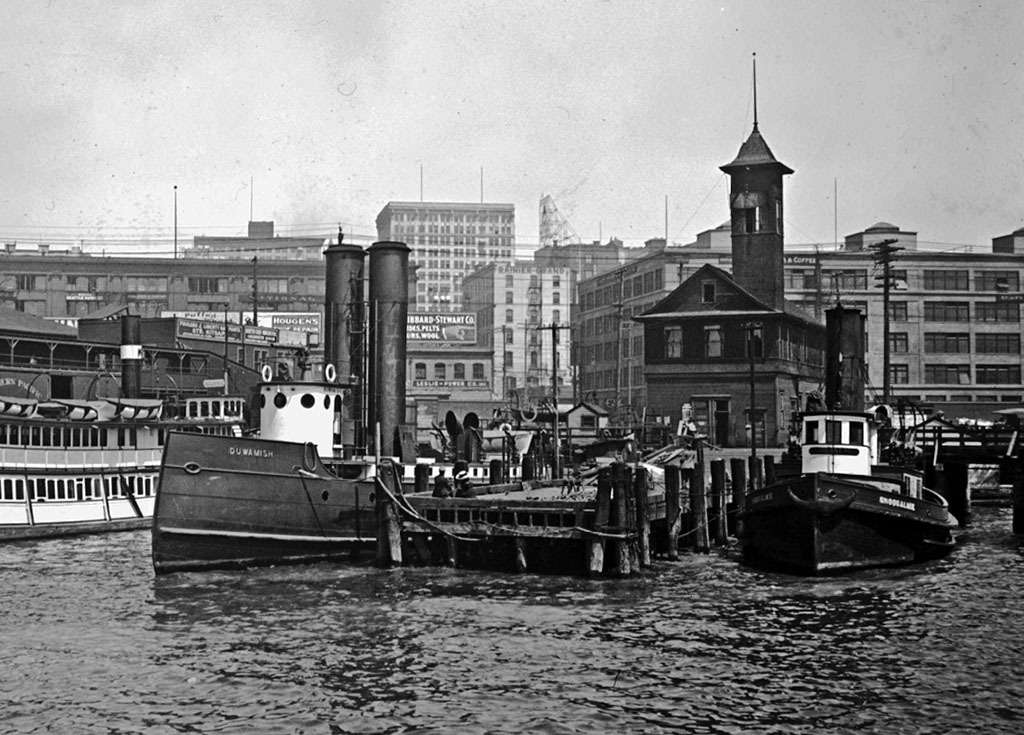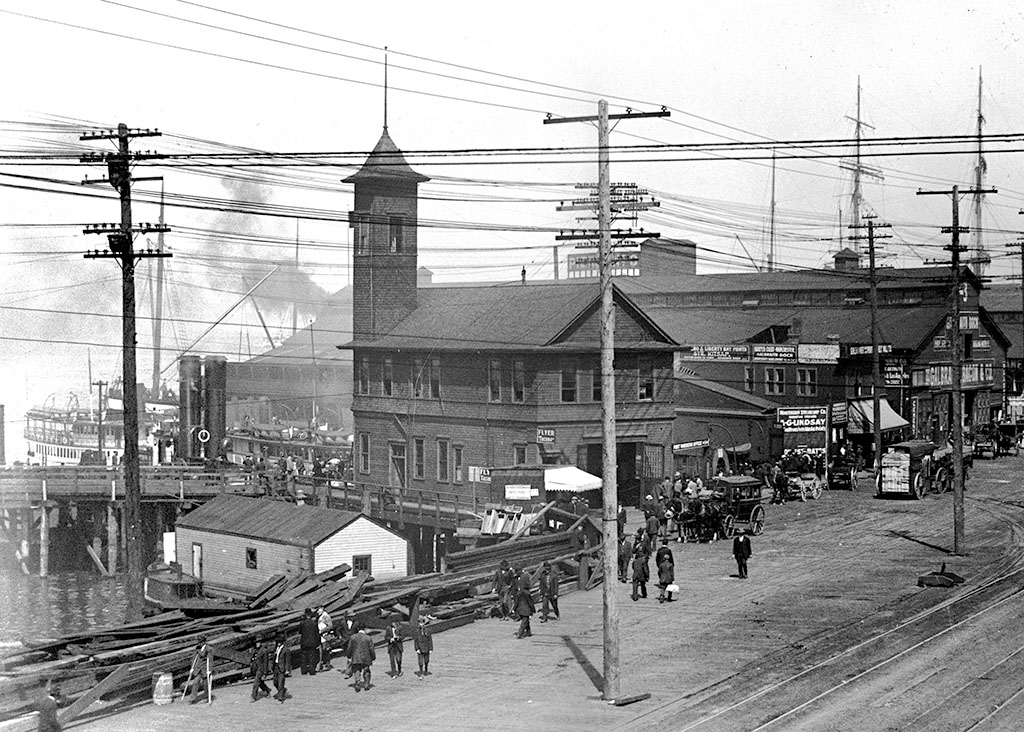-
Fire Station/Colman Dock
925 Alaskan Way
Foot of Madison Street
Seattle has had a fireboat since the Snoqualmie was launched in 1891. In addition to fighting fires on vessels or piers that fire engines could not reach, the Seattle Fire Department also expected the new boat could, “with a proper conduit [hose] … do good service as far back as Second or even Third street” to supplement the city’s onshore firefighters’ efforts. The boat could also pump salt water into the fire hydrant system in the case of a failure in the freshwater supply.
In 1910 the fireboat Duwamish joined the Snoqualmie at the station. The new boat could pump 22,800 gallons of water per minute on vessel and pier fires, nearly four times the capacity of the Snoqualmie. Another new fireboat, the Alki, entered service in 1927. The Leschi, launched in 2007, is currently stationed at Fire Station 5. In addition to fighting vessel or pier fires, it can serve as a mobile command center and respond to chemical, biological, radiological, nuclear, or explosive emergencies. Rescue Boat 5 and Rescue Boat 2 are also docked at Fire Station 5, along with some auxiliary boats.
There have been four fire station buildings at this location. The first, a wood frame building, opened in 1891 and was replaced by a larger wood frame building in 1902. From 1917 to 1961 a two-story brick building served as the fire station. It had to be removed because the piers supporting the station began to rot. The current building opened in 1961. It was designed by architects at Durham, Anderson & Freed in the Modern style.
Just south of the fire station is Colman Dock, one of the first docks that served the Mosquito Fleet, the flotilla of small steamers that plied the sound’s waters carrying people and farm produce. The growing city of Seattle served as a major maritime transportation hub on Puget Sound, with many of the steamer routes beginning and ending at one of the numerous piers on the central waterfront.
In 1882, James Colman opened his namesake dock next to Yesler’s Wharf. The 40-by-60-foot shipping dock was destroyed by the Great Seattle Fire in 1889, but Colman built a new dock with an impressive façade on Railroad Avenue, and organized the Colman Dock Company. Bigger plans were in the works when Colman died in 1906, and in 1908 the dock was extended 705 feet into the bay and a clock tower and domed waiting room were added.
The dock became the terminal for several transportation companies and shipping lines, but beginning in the 1920s, as automobile ownership rose and highways and roads improved, maritime passenger travel diminished. Some Mosquito Fleet steamers were converted to auto ferries, but by the 1930s, newer and larger diesel-electric vessels began carrying cars and trucks.
The Puget Sound Navigation Company –– headed by Captain Alexander Peabody –– had achieved a virtual monopoly for cross-sound traffic by then, and the Colman Dock Company came under Peabody’s control. He modernized the dock in 1937, with an Art Deco design, but after World War II a series of rate hikes, strikes, and withdrawals of service led to the sale of most of Peabody’s company, and the creation of Washington State Ferries in 1951. Ten years later, the state rebuilt Colman Dock and a the newest iteration, designed by NBBJ opened in 2024. Passenger-only vessels, echoing the Mosquito Fleet steamers, operate out of a newly constructed Pier 50 that opened in 2019.
